In 1996 Mark Twain scholar Shelley Fisher Fishkin, editor of the Oxford Mark Twain and author of Was Huck Black?: Mark Twain and African-American Voices, wrote a skeptic’s critique of Hannibal and its Mark Twain Boyhood Home and Museum.
Hannibal had not overcome its segregated past. Separate black and white American Legion posts existed nearby each other. The town did not acknowledge a past of black-owned businesses in its historic district, including a hotel and a nightclub named Blue Heaven.
The Boyhood Home and Museum was much more about the story of white kids—Tom Sawyer and Becky Thatcher— than about Huck Finn, Jim and Twain’s tussle with racism, Fishkin suggested. To help make her point Fishkin interviewed Henry Sweets III, the museum’s curator:
“Is Twain’s antiracism known here? Is it taught here?”
“It isn’t brushed under the rug,” Sweets is quoted as saying. “It just isn’t approached….The tie to Mark Twain for Hannibal is Tom Sawyer. The connection people feel is really Tom Sawyer rather than through any other of the writings.”
Fifteen years after Fishkin’s critique, we re-interviewed Sweets, who is in in his 33rd year as the Boyhood Home and Museum’s curator. He exhibits the eager enthusiasm of a Twainiac, taking out-of-town guests not only on a tour of the museum buildings, but also to local cemeteries to view Clemens family and slave graves, and an elevated lighthouse to look down upon the town and Mississippi River.
Sweets is a citizen of Hannibal. He grew up there, served as its school board president and won the Chamber of Commerce’s Pacesetter Award in 2010. He annually accompanies a friend, now 95 years old, in the Hannibal Cannibal road race, billed as one of the toughest in America, and, at age 62, still pitches for Arch Methodist Church in the church softball league. “My reflexes are good enough,” he says. “I can stop line drives.”
As for Fishkin, he says, “We don’t react to one person.” But he points to ways in which the museum’s presentation has evolved. Today’s museumgoer repeatedly receives messages about slavery as practiced in the Hannibal area and by the family of Samuel Clemens (Mark Twain).
The boyhood home exhibit focuses on the issue of slavery in the Clemens family. A sign in a kitchen explains the tiny sleeping pallet on its floor: “Household slaves would not have beds. They would have slept on a…compilation of sheets, blankets, clothes or rugs….Slaves would have slept near the fireplace where they could tend the fire and have it ready to prepare breakfast.”
Sweets and other museum personnel devote time to addressing issues of race, past and present. Sweets says the museum plans to “change drastically” its justice of the peace building. The recent discovery of ledgers from the courtroom of Samuel Clemens’ father, a justice of the peace, might provide an opportunity to update the museum’s treatment of the legal system for local blacks.
The museum holds three one-week summer training sessions for third-grade through high school teachers to help them learn how to teach Twain writings that focus on such controversial topics as race.
Cindy Lovell, the museum’s director, teaches a course, “Prison Nation,” in nearby Quincy, Ill., about what has been called the new Jim Crow. She serves on the board of Community Partners for Reconciliation, with half black and half white membership, that seeks to eradicate racism in Hannibal.
The museum hosted a Partners for Reconciliation-sponsored anti-racism workshop. Lovell and the museum staff also are helping local black residents create a local museum that tells the history of Hannibal’s blacks.
The Boyhood Home and Museum now offers Wednesday through Saturday, morning and afternoon, free performances with admission by Gladys Coggswell as the black storyteller in Twain’s “A True Story, Repeated Word for Word As I Heard It.”
But critics feel the museum could do more. Attorney Terrell Dempsey, author of a book on local slavery, lists several slavery sites in town, including a slavery auction building across from the museum’s interpretation center. Street signs of the kind found in Springfield, Ill, could draw attention to Hannibal’s early black-owned businesses and slavery sites.
Sharon McCoy, a fan of a two-disc CD, “Mark Twain Words & Music,” e-mailed Lovell to complain about one aspect of the CD, a museum fund-raiser. She applauded the quality of Jimmy Buffett, Clint Eastwood, Sheryl Crow and other artists chosen for the CD’s readings and songs.
But she pointed to the irony of a CD about the boy who became Mark Twain being “told in a way that excludes so many of the voices that impelled the boy to become Mark Twain.” Of the dozens of artists on the CD none is black.
Loren Ghiglione


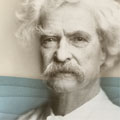
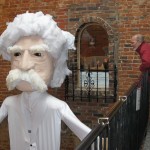
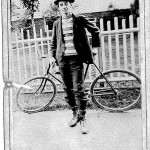
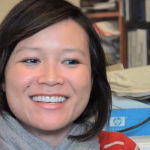


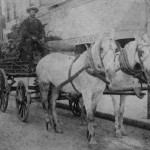

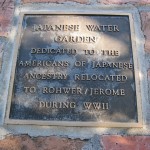


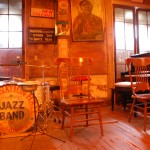

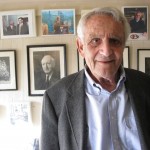
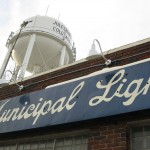

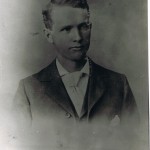


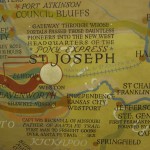


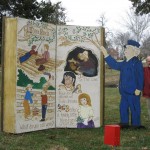

Would love to have a conversation with you– I make products based on the sayings or Mark Twain and have had totally different “receptions” depending upon the topic and the region of the county — I found your article to be very interesting. We are definitely a very diverse country — lots of fodder for Twain’s pen.
Thank you.
Where are you located? Is it possibly near our trip route? Best, Loren Ghiglioen